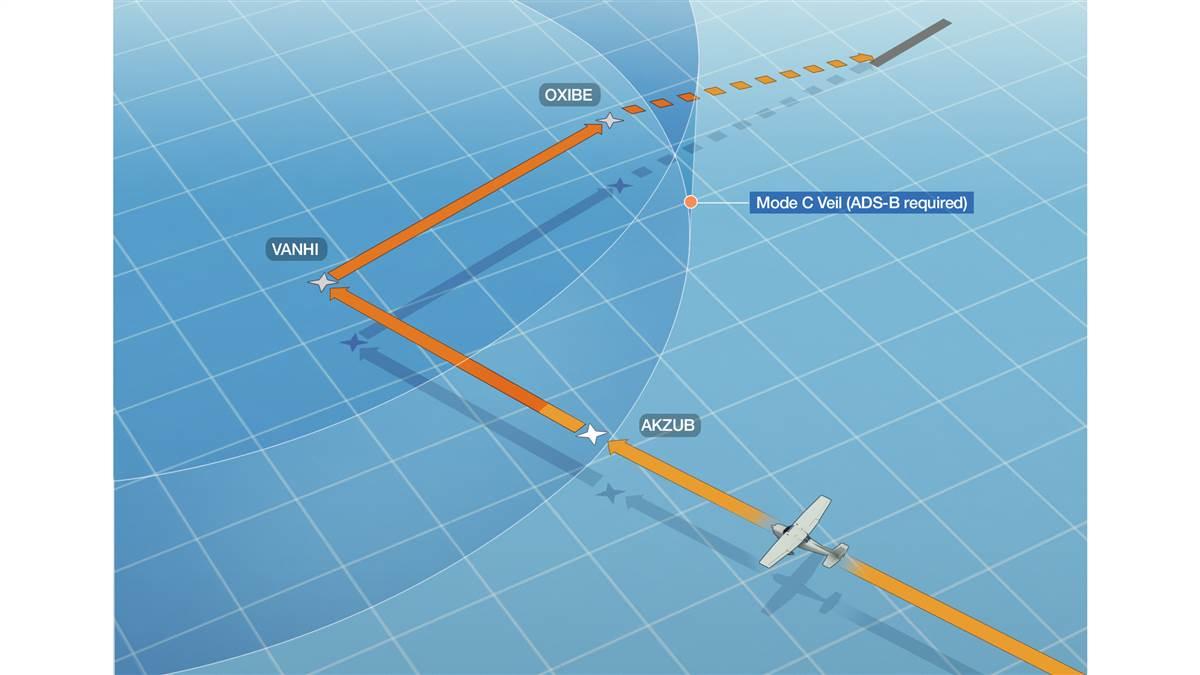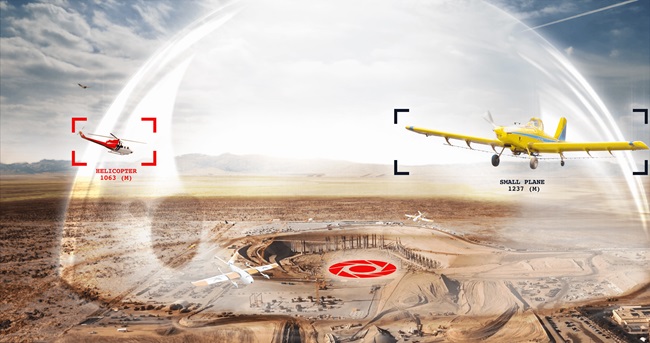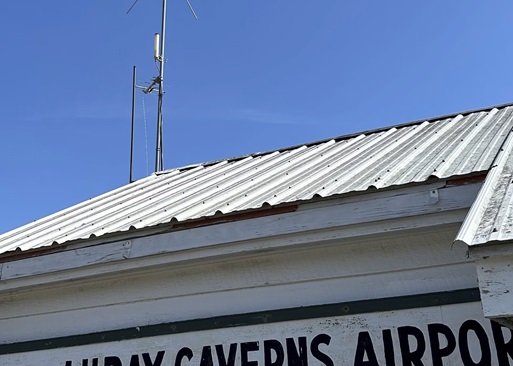ADS-B gotchas
Will these trip up your unequipped flight?

Illustration by Charles Floyd
Then, just after passing AKZUB and less than 15 nautical miles from touchdown, it happens. You enter the 30-nautical-mile Mode C veil surrounding Kansas City International Airport and, because the airplane you’re flying is not equipped with Automatic Dependent Surveillance-Broadcast (ADS-B) Out, you have violated FAR 91.225. Maybe the surprise visit to see your Aunt Lucille wasn’t such a great idea after all.
Actually, there’s no problem flying that approach today. But it will be unavailable to aircraft without ADS-B Out after January 1, 2020, when the FAA has mandated ADS-B Out for flight in the airspace defined by FAR 91.225. ADS-B uses GPS satellites to determine an aircraft’s position, and then transmits it to FAA ground stations and other aircraft. It is a key technology behind the agency’s Next Generation Air Transportation System.
ADS-B Out will be required for flights after January 1, 2020, in all Class A, B, and C airspace; within the 48 contiguous states, Class E airspace at or above 10,000 feet msl, excluding the airspace at and below 2,500 feet agl; within 30 nm of a Class B primary airport (the Mode C veil); above the ceiling and within the lateral boundaries of Class B or Class C airspace up to 10,000 feet; and in Class E airspace over the Gulf of Mexico, at and above 3,000 feet msl, within 12 nm of the U.S. coast. Except for the Gulf of Mexico airspace, this essentially is where a Mode C transponder is required today.
How many instrument approach procedures are potentially affected by segments that cut through airspace where ADS-B Out will be required? There is no comprehensive count, but any instrument approach procedure to an airport just outside a Mode C veil, or Class B or Class C airspace, could be at risk. And the task of identifying the problem is complicated by the fact that airspace boundaries and Mode C veils are not depicted on approach charts (although Mode C veils are shown on FAA low-altitude IFR charts).
Planning will need to include more than the IAP itself. For example, at Cameron, Missouri, the RNAV (GPS) Runway 17 approach avoids ADS-B rule airspace, but the missed approach procedure routes you straight into the Mode C veil. Instrument approaches into California’s Salinas Municipal Airport avoid FAR 91.225 airspace, but many of their missed approach procedures require flight within the lateral boundaries of the Monterey Class C.
The threshold of Runway 12 at Gary/Chicago International Airport in Gary, Indiana, nearly abuts the Chicago Mode C veil, making approaches; missed approaches from Runway 30, and even VFR patterns are a problem for nonequipped aircraft. Pretty much every instrument approach—or missed approach procedure—to Gwinnett County-Briscoe Field in Lawrenceville, Georgia, requires flight within the Atlanta Mode C veil. The only IAP into Norwalk-Huron County Airport in Norwalk, Ohio, requires that you fly within the Cleveland Mode C veil.
A similar gotcha could affect VFR pilots receiving radar traffic advisories. You’ve plotted a route to stay clear of Class B and Class C airspace, and a well-intentioned controller—remember, he or she may not readily know whether your aircraft is equipped with ADS-B—offers a shortcut through their sector. Will you remember the imminent rule violation before you graciously thank the controller and make the turn?
ADS-B airspace gotchas are not limited to the continental United States. In Hawaii, the Mode C veil surrounding Daniel K Inouye International Airport in Honolulu covers the entire island of Oahu (and then some)—and the Class C airspace for Kahului Airport bisects the island of Maui. And in San Juan, Puerto Rico, the Class C airspace for Luis Munoz Marin International Airport covers the island’s busiest airspace.
“Basically, 100 percent of aircraft in both areas need to equip,” said Rune Duke, AOPA senior director of airspace and air traffic. The FAA’s 2015 GA Survey estimates about 475 active GA aircraft based in Hawaii, and about 420 active GA aircraft in Puerto Rico, Duke said. As of August 1, 2018, only 52 fixed-wing GA aircraft in Hawaii had equipped with ADS-B Out; for Puerto Rico, the number was 47. The isolated nature of Hawaii and Puerto Rico, and the limited number of avionics shops on the islands, will make it tougher for aircraft owners to schedule installations as the January 2020 mandate approaches.
As of December 1, 2018—the most recent data available at press time, because of the federal government shutdown—48,892 U.S. fixed-wing general aviation aircraft had been equipped with ADS-B Out. For aircraft owners who have not yet decided about equipping, at press time $500 ADS-B Out rebates from the FAA (www.faa.gov/go/rebate) remained available but exact numbers were not accessible, again because of the shutdown. (Owners can make reservations and validate equipment performance during the shutdown, but processing of rebate checks is delayed.)
One of the biggest challenges facing owners who have not yet equipped may be the clock. From March 1 there are 10 months remaining to complete an ADS-B Out installation before the mandate becomes effective. Some shops are reporting installation backlogs of more than six months. If you need to equip before January 2020, schedule the installation now, even if you’re still undecided about which hardware you will use.
Email [email protected]



